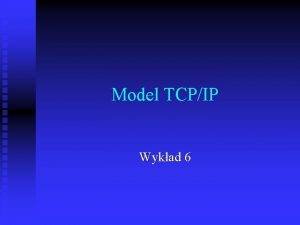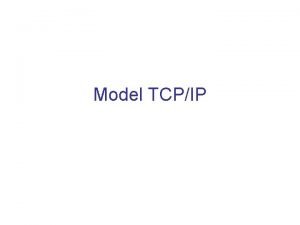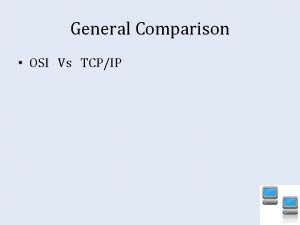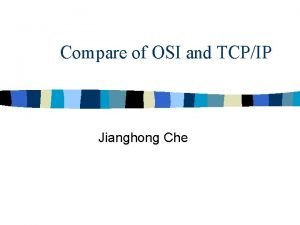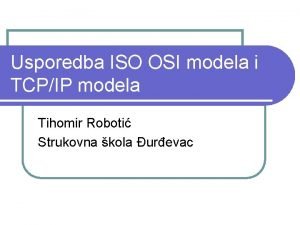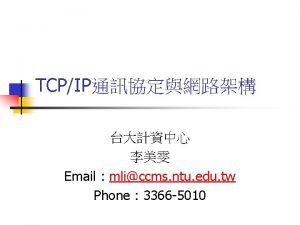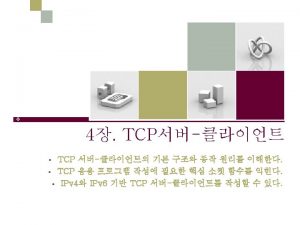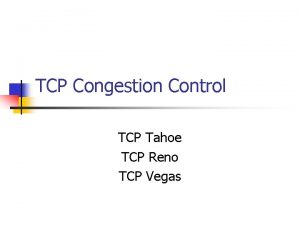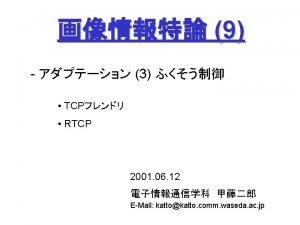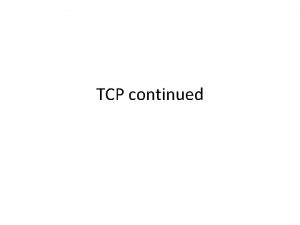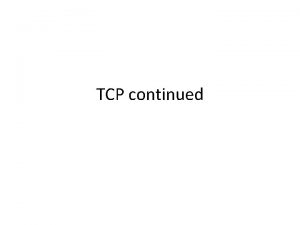TCP IP Reference Model TCP IP Reference Model









- Slides: 9

TCP/ IP Reference Model

TCP/ IP Reference Model • • • TCP/IP developed by US Department of Defense (Do. D) initiated in 1969. TCP/IP Reference Model is named from two of the most important protocols in it The Transmission Control Protocol (TCP) and the Internet Protocol (IP) Similar to OSI model. Ajith G. S: http: //poposir. orgfree. com

TCP/ IP Reference Model • Similar to OSI model. Ajith G. S: http: //poposir. orgfree. com

TCP/ IP Reference Model Ajith G. S: http: //poposir. orgfree. com

TCP/ IP Reference Model Application Layer • • • The Application Layer is equivalent to the top three layers, (Application, Presentation and Session Layers), in the OSI model The most common protocols used in this layer are TELNET, FTP, SMTP, DNS etc. Ajith G. S: http: //poposir. orgfree. com

TCP/ IP Reference Model Transport Layer • • • It decides if data transmission should be on parallel path or single path. Functions such as multiplexing, segmenting or splitting on the data is done by transport layer. Transport layer also arrange the packets to be sent, in sequence. TCP UDP Ajith G. S: http: //poposir. orgfree. com

TCP/ IP Reference Model Internet Layer • • • Similar to OSI Network Layer Manages the connections across networks as information is passed from source to destination It helps the packet to travel independently to the destination. Order in which packets are received is different from the way they are sent. IP-Internetworking Protocol Ajith G. S: http: //poposir. orgfree. com

TCP/ IP Reference Model Internet Layer • • ARP-Address Resolution Protocol Associates a logical address with a physical address RARP-Reverse Address Resolution Protocol Associates a logical address with a physical address ICMP-Internet Control Message Protocol Used by host and gateways to send notification back to the sender IGMP-Internet Group Management Protocol Simultaneous transmission of a message to a group of recipient Ajith G. S: http: //poposir. orgfree. com

TCP/ IP Reference Model • • • TCP/IP host sends data can be viewed as a five-step process: Step 1 Create and encapsulate the application data with any required application layer headers. Step 2 Encapsulate the data supplied by the application layer inside a transport layer header. For end-user applications, a TCP or UDP header is typically used. Step 3 Encapsulate the data supplied by the transport layer inside an Internet layer (IP) header. IP defines the IP addresses that uniquely identify each computer. Step 4 Encapsulate the data supplied by the Internet layer inside a data link layer header and trailer. This is the only layer that uses both a header and a trailer. Step 5 The physical layer encodes a signal onto the medium to transmit the frame. Ajith G. S: http: //poposir. orgfree. com


